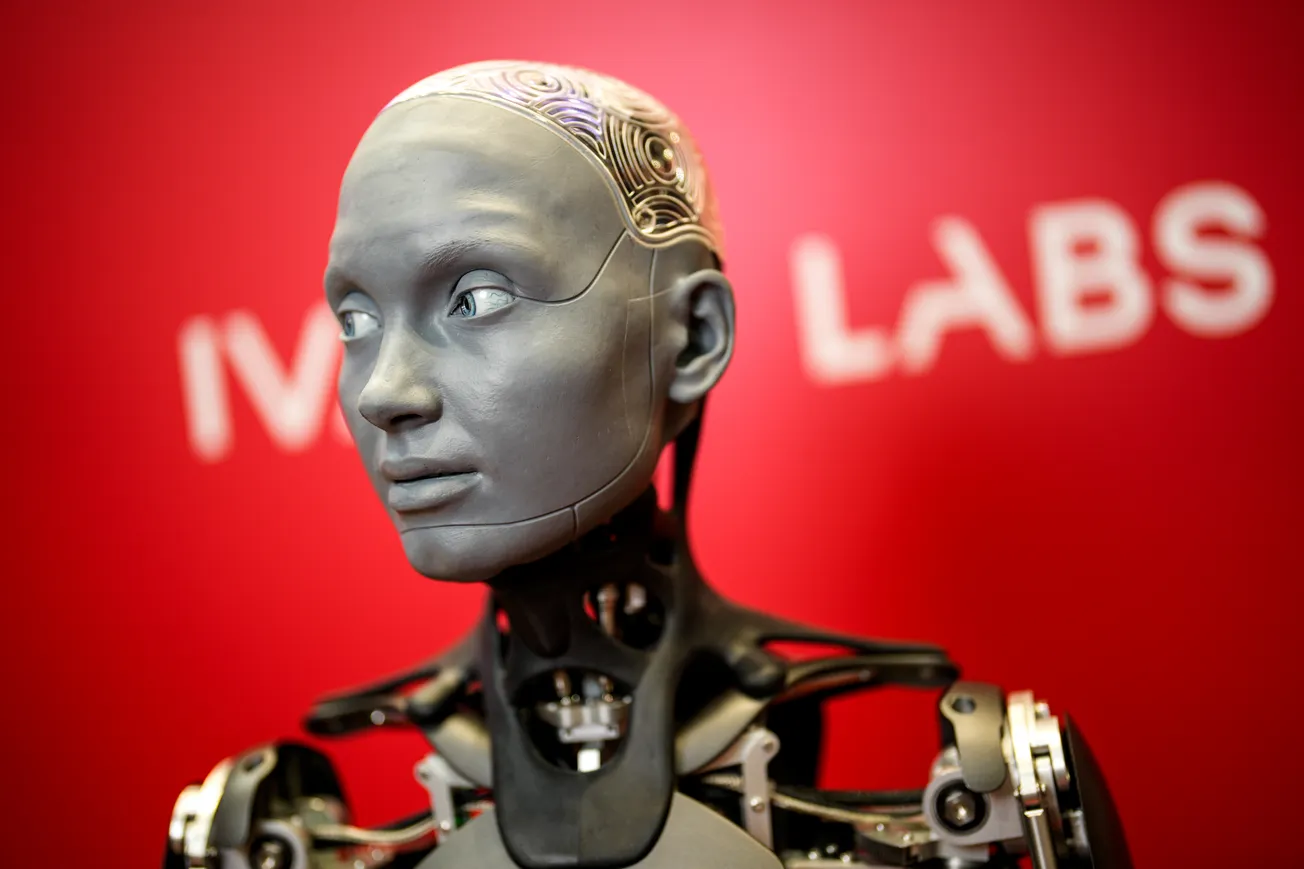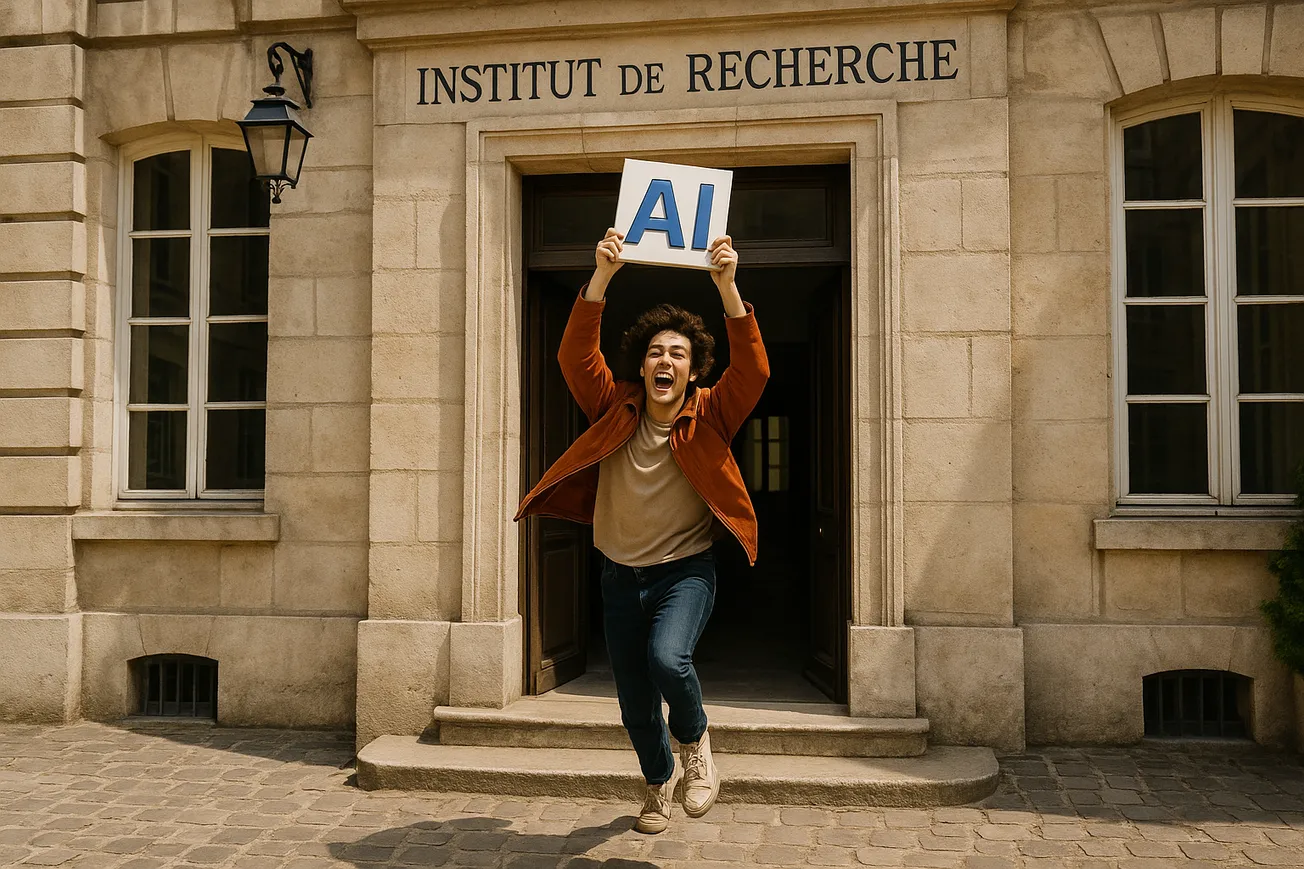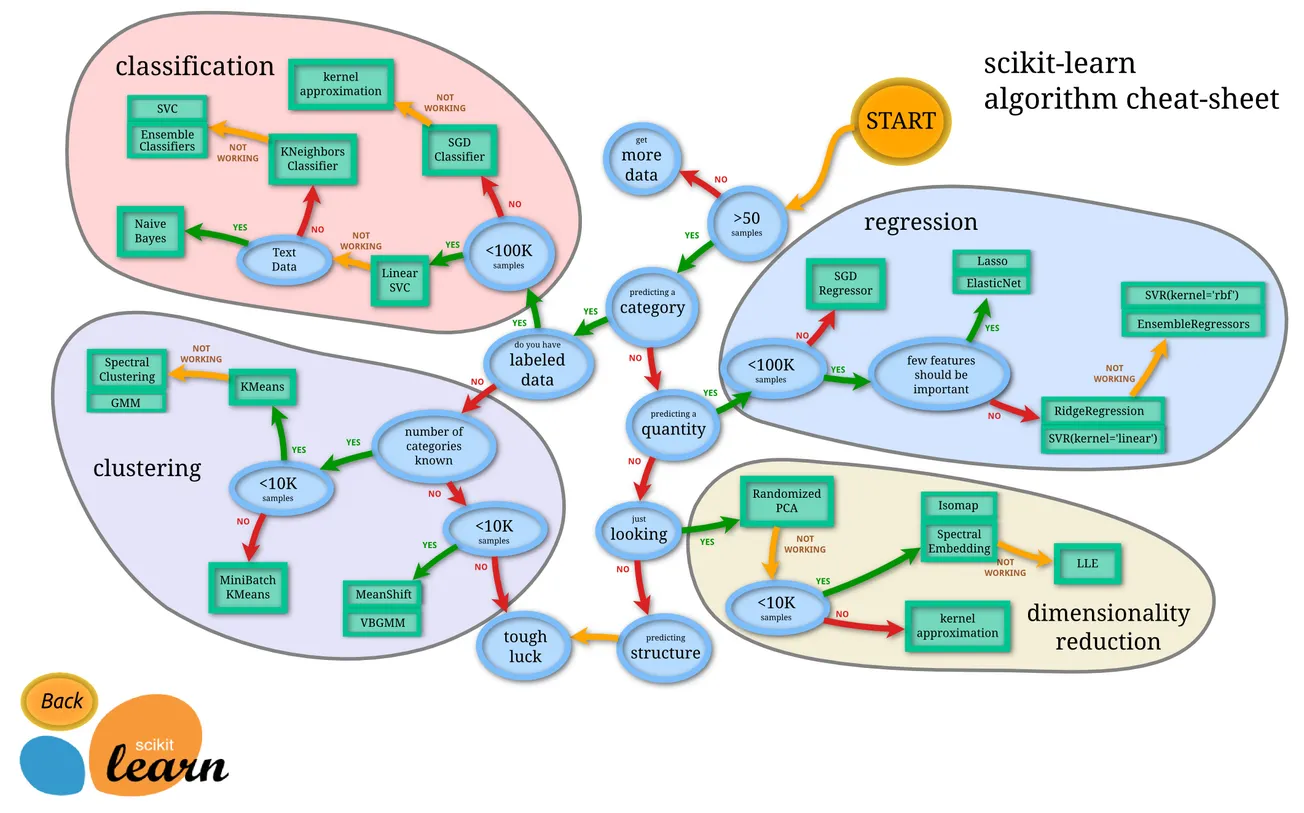What was once the realm of futuristic speculation is fast becoming tangible: humanoid robots learning via AI, helpful service robots in public spaces, and autonomous machines tackling tasks from driving to caregiving.
The latest edition of VivaTech 2025 made it clear that the humanoid robotic revolution is here. While there have always been novelty robots drawing crowds on the exhibition floor at VivaTech, this year's edition demonstrated that the robotic conversation has become much more serious and urgent. There were at least 36 companies featuring robots on the exhibition floor this year.
As AI and hardware intersect, humanoid robots have moved beyond curiosities to practical deployment, even as the hype still makes it difficult to fully gauge progress.
Nvidia CEO Jensen Huang set the tone for the week with his opening keynote, which included a healthy dose of robotic demonstrations and enthusiasm.
“Soon, everything that moves will be robotic,” Huang said.
NVIDIA

Nvidia’s investments in robotics software include the Omniverse platform for creating digital twins of robots and the new Isaac and Newton AI systems that train robots in virtual worlds. Huang said that with powerful GPUs now enabling better AI brains and simulation, robots can be smarter and cheaper. He envisioned factories full of robot workers even as he trotted out Nvidia's Grek droid to join him on stage.
For more coverage of Nvidia's robotic announcements at VivaTech, read our coverage here:
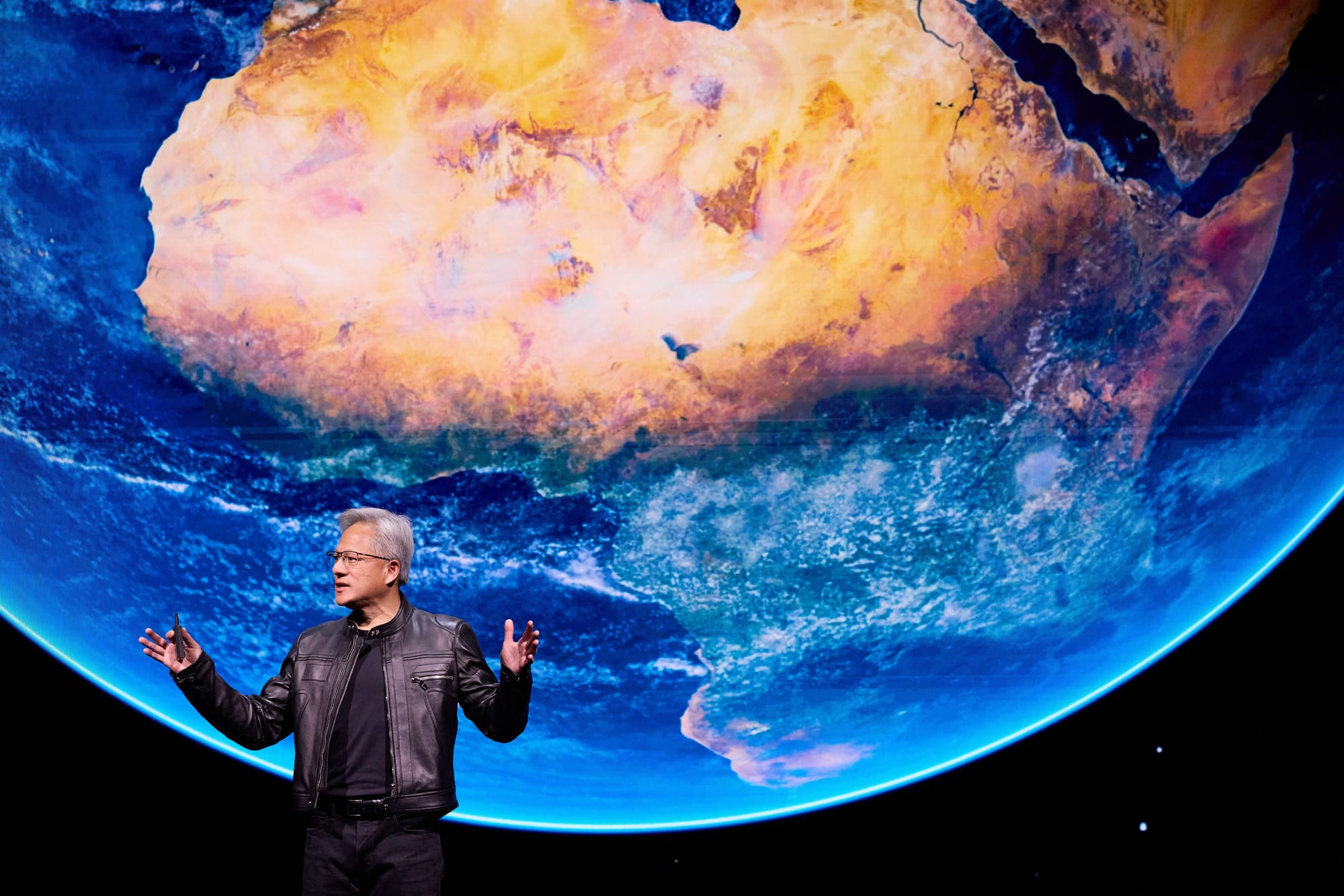
Government + Robotics
The French government unveiled three new initiatives under the France 2030 plan to position France as a leader in AI‑powered robotics. First, a €30 million “robotics acceleration” research programme, led by the national research agency CNRS, will fund interdisciplinary work to tackle core challenges—such as control, perception, locomotion, adaptation, and efficiency—aimed at advancing intelligent robot prototypes for industry.
Next, a “Pioneer of AI” funding scheme will support deep‑tech startups, labs, and public‑private consortia developing breakthrough AI innovations, with a strong emphasis on robotics applications. A third pillar is the “AMI Robotique et machine intelligente” call for collaborative R&D projects to develop modular, interoperable, energy‑efficient, and user‑friendly robotic systems.
The agencies managing digital and component programmes will now coordinate technology scouting, public‑private partnerships, and international collaboration to bolster convergence between AI and robotics. Examples of early winners include AXGROUP’s “Spider” solar‑powered cleaning robot and LOGIE‑AI, an open‑source generative‑AI logistics robot. Both are spearheaded through France 2030 funding.
Meanwhile, France's state innovation bank Bpifrance held an invite-only breakfast for investors on the sidelines of VivaTech called: “Humanoid Robots: When AI Becomes Physical."
Agility Robotics
I hosted a fireside chat with Agility Robotics Chief Business Officer Daniel Diez on the topic of "AI, Robotics, Humans, and the End of Work as We Know It?" Diez demonstrated Agility's Digit on stage as we discussed how AI-driven robots will impact the workforce.

"Is this the end of labor as we know it? Diez told me. "I think we're at the precipice of a fundamental change in the way we think about labor and how people are used or deployed to do work."
You can read more about our conversation here:
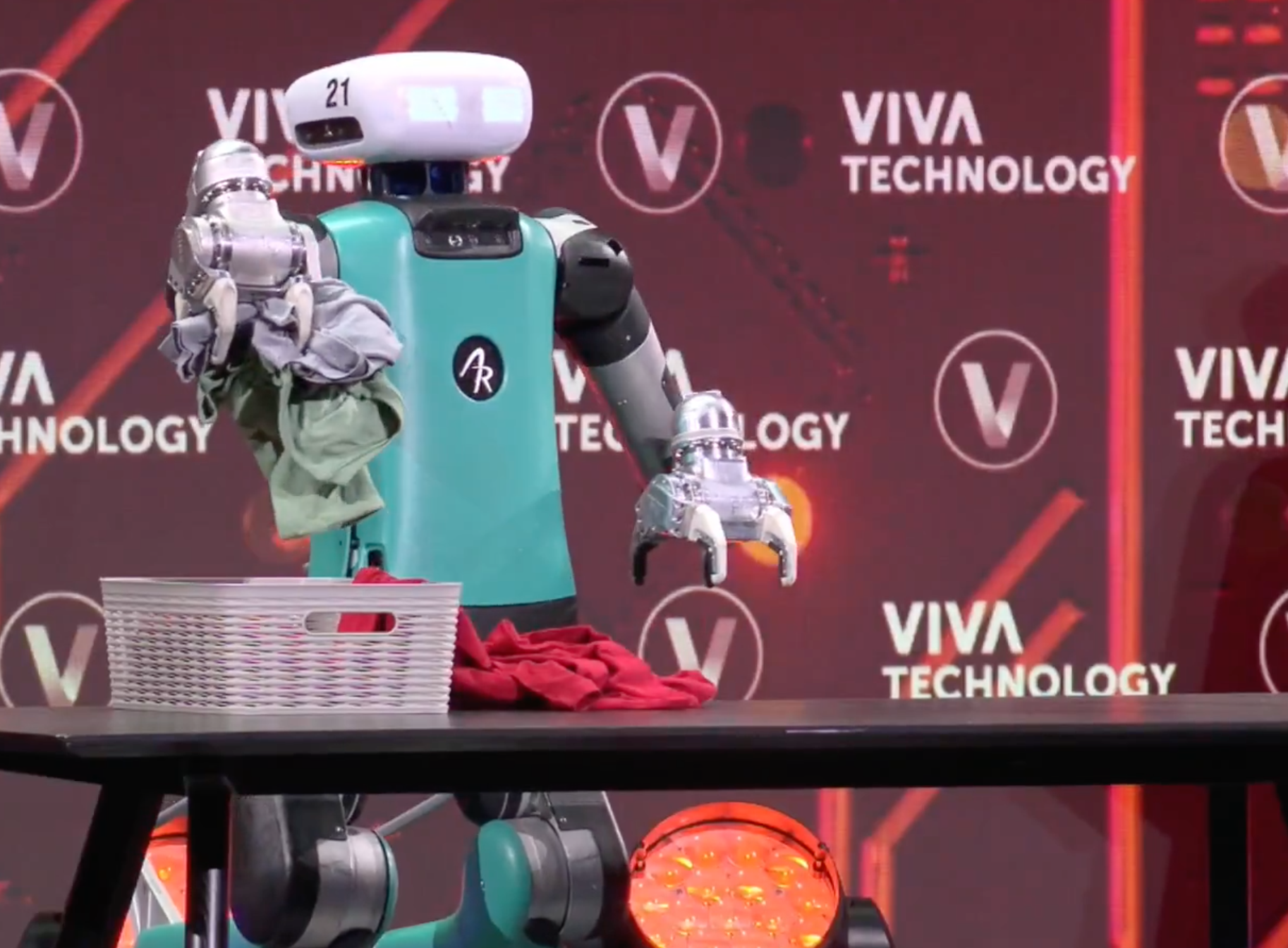
Unitree Robotics
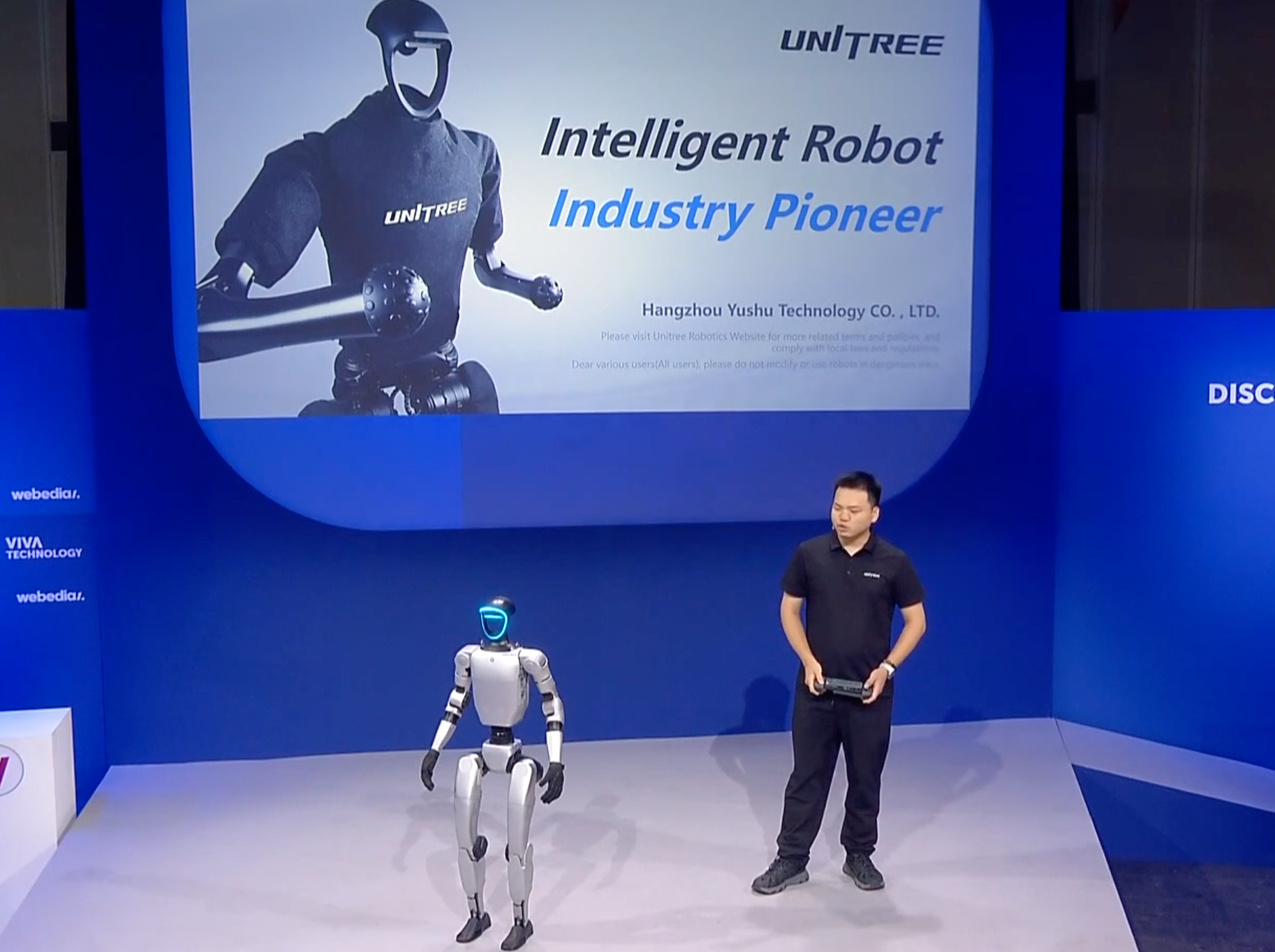
Unitree Robotics Sales Manager Pedro Zheng demonstrated the Chinese company's advanced quadruped and humanoid robots while outlining an ambitious vision for artificial intelligence integration. Founded in 2016, Unitree Robotics has rapidly established itself as a dominant force in the robotics industry with more than 600 employees supporting operations worldwide.
Unitree's product lineup spans from entertainment-focused robots to industrial workhorses. Its quadruped robots include the Go series for consumers and researchers, and the heavy-duty B2 series for industrial inspection. Zheng said these models are often used in dangerous environments such as firefighting, post-earthquake rescue, and oil and gas inspection.
But the company's humanoid robots represent its newest frontier. The H1, priced at $90,000, targets industrial applications, while the newer G1 model, at $60,000, focuses on broader market adoption. Zheng revealed plans for an even more accessible model: a smaller humanoid robot expected to cost around $9,000.
Unitree's humanoid robots serve diverse markets today, including entertainment, manufacturing, and potentially elderly care. The robots come equipped with ChatGPT integration for voice commands, and Unitree is developing advanced learning capabilities. The company demonstrated this at recent events, where humanoid robots learned dance routines by watching videos and adapting to live performance environments.
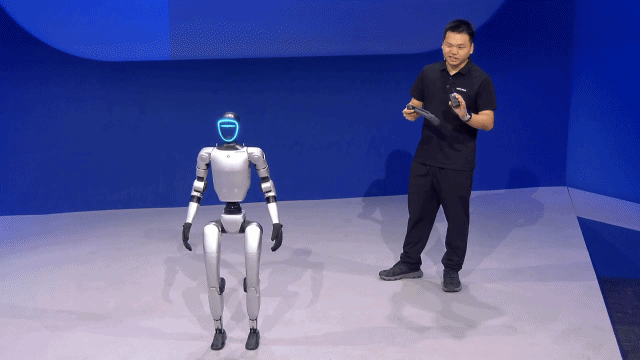
Zheng emphasized the company's long-term vision: "We believe only the humanoid robot can achieve general AI."
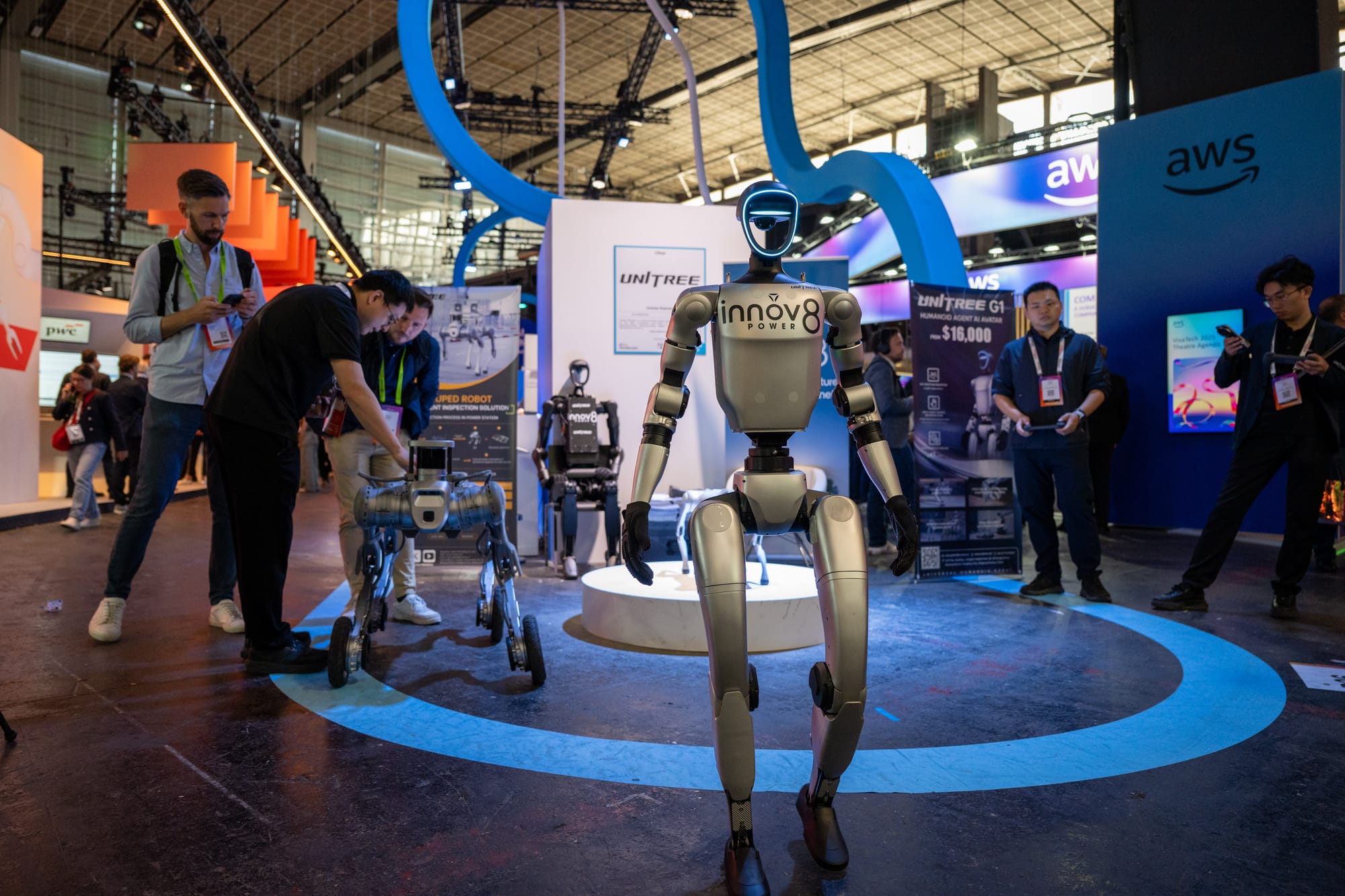
Enchanted Tools: Mirokai

Salesforce and French robotics company Enchanted Tools showcased their collaboration to merge business AI with social robotics, presenting a vision where AI-powered robots could transform customer service and facility management across multiple industries.
The partnership combines Salesforce's Agent Force platform with Enchanted Tools' Mirokai robot, a social companion designed to interact naturally with humans in various environments. The demonstration, led by Sebastien Jamon, AI Director at Salesforce, Carlos Lozano from the Agent Force team, and Sacha Duc, co-CTO of Enchanted Tools, illustrated how the two technologies could work together to create more engaging user experiences.
"Why don't we bring the best of business AI with the best of robots out there, right?" Jamon asked during the presentation.
Enchanted Tools, a Paris-based company founded by robotics pioneer Jerome Monseau, has developed the Mirokai with a distinct philosophy toward robotic interaction. "We wanted to do more than build a smart and useful robot. We want to bring them to life," explained Duc. The company's mission centers on reimagining robotic capabilities, creating machines that are "not just robots, companions, not just tools, characters, not just efficient, but also magical."
The demonstration focused on a facility management scenario where users could interact with the robot to book meeting rooms. Lozano explained how Agent Force enables non-developers to create intelligent agents: "If you can describe it, Agent Force will be able to do it."
The Agent Force platform allows users to build AI agents through a topic-based system, where each agent receives specific instructions and tools to accomplish designated tasks. The system includes what Salesforce calls "instruction tuning," an iterative process where AI helps users improve their prompts and agent configurations.
Lozano demonstrated how the system reasons through user requests, automatically determining which topics and actions are relevant to fulfill specific needs. "At every user request, the planner is reasoning. What is this about? What is the user's intent? Do I have any topics to fulfill it?" he explained.
Enchanted Tools envisions broad applications for its robotic platform beyond facility management. "The Mirokai has been designed to work in different environments, such as hospitals, nursing homes, pediatric units, stores, and hotels," Duc noted. The robot's capabilities span three main areas: serving as a social companion that can "talk with residents with customers, give information, advice, and lead activities," providing guidance and monitoring functions, and performing logistic tasks like carrying supplies.
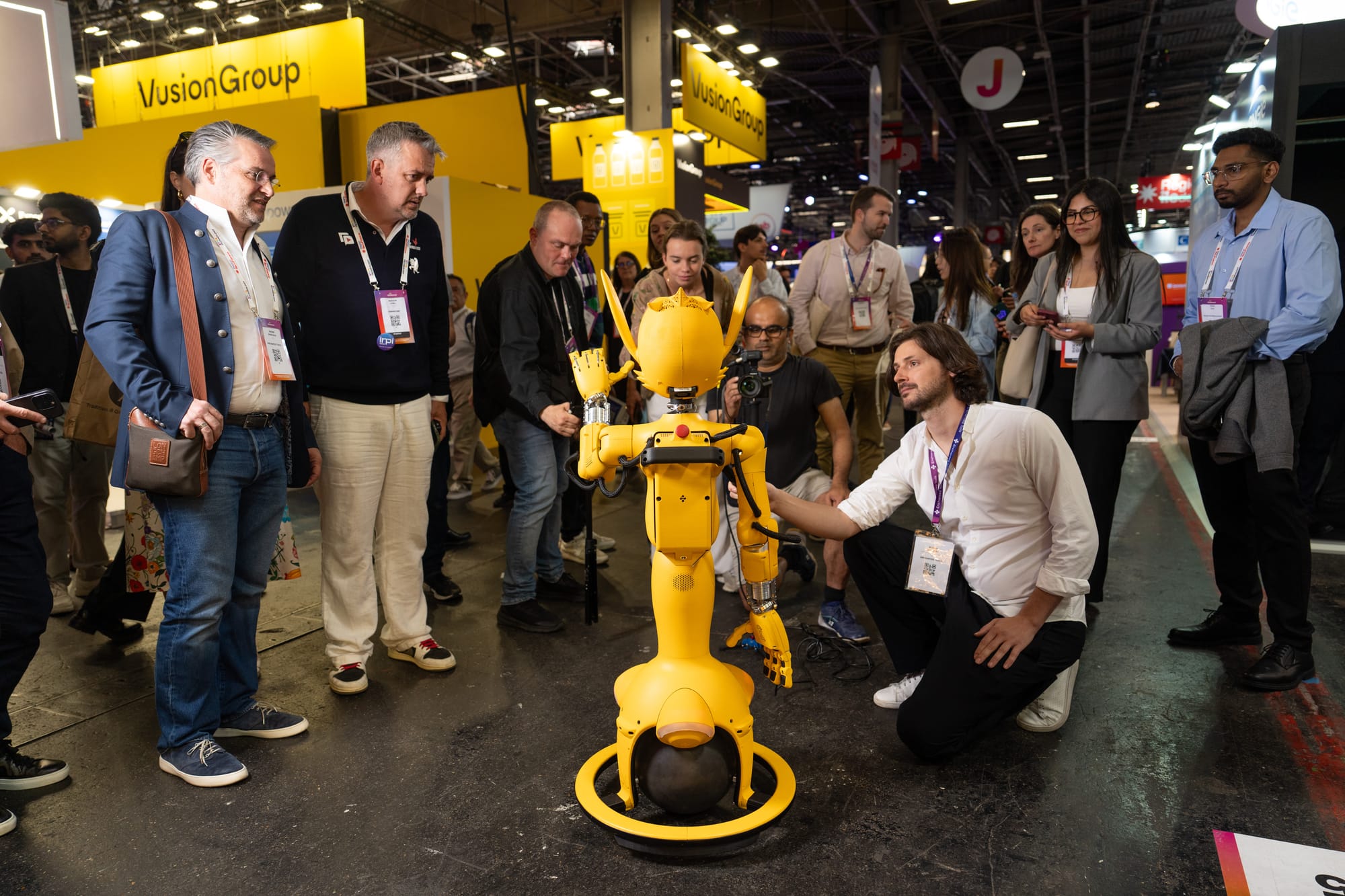
Lozano painted a picture of widespread adoption, suggesting scenarios where travelers might encounter Mirokai robots at airports, shoppers at retail stores, or elderly individuals in care facilities.
Ameca
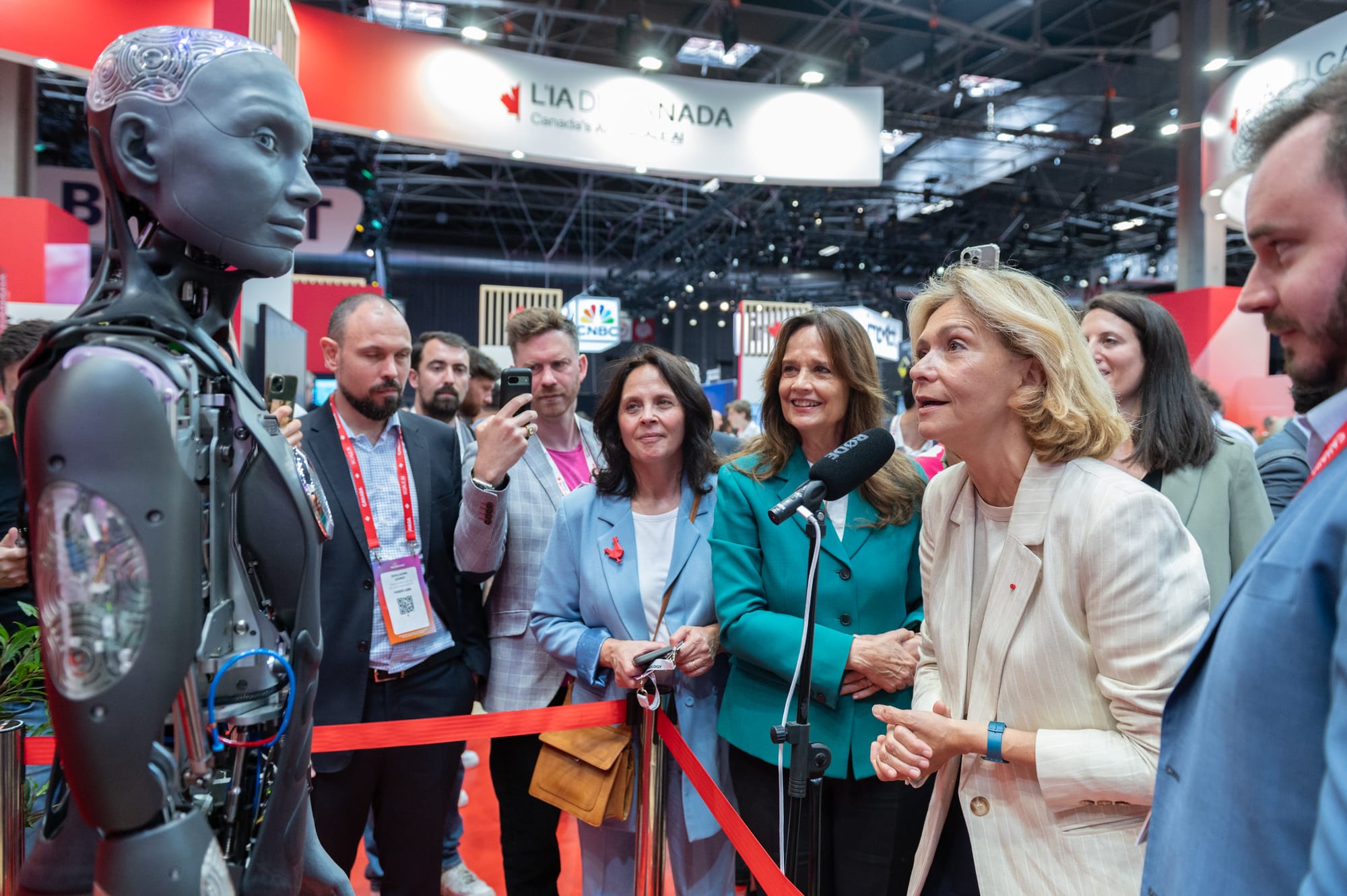
Ameca, the lifelike humanoid famous for its human-like face and expressions, made a notable appearance, courtesy of the UK’s Engineered Arts and Canada’s IVADO Labs. Ameca engaged visitors in conversation. In a memorable moment, French President Emmanuel Macron stopped by to meet Ameca, which led to a brief “interview” style chat with Macron.
Ameca underscored advancements in social robots: it can recognize faces, detect emotions, and respond via a large language model, making it a prime example of AI-driven human–robot interaction. This demo hinted at future concierge or reception robots that could engage people naturally.
Hugging Face + Pollen Robotics
Though Hugging Face wasn't at VivaTech to demonstrate robots, the New York-based AI company, started by French founders, was flying its robotic flag around the world during the conference. On June 14–15, 2025, Hugging Face hosted its LeRobot Worldwide Hackathon, running online and across 100+ local hubs on six continents. The company described it as the “ChatGPT moment of robotics."
Participants assembled SO-series robot arms, loaded firmware, tuned vision-language-action models, and submitted dataset/video demos.
The event came two months after Hugging Face acquired Pollen Robotics, the Bordeaux-based startup founded in 2016 by Matthieu Lapeyre and Pierre Rouanet, both former researchers at Inria’s Flowers team. Pollen is known for its modular, open‑source humanoid platform Reachy 2, which features stereo vision, VR teleoperation, spatial audio, and 7 degrees of freedom.
Hugging Face and Pollen share a commitment to open-source. By combining Pollen’s hardware and Hugging Face’s open-source AI tools, especially its LeRobot framework, the company wants to grant developers full-stack access to build customizable, embodied agents.

